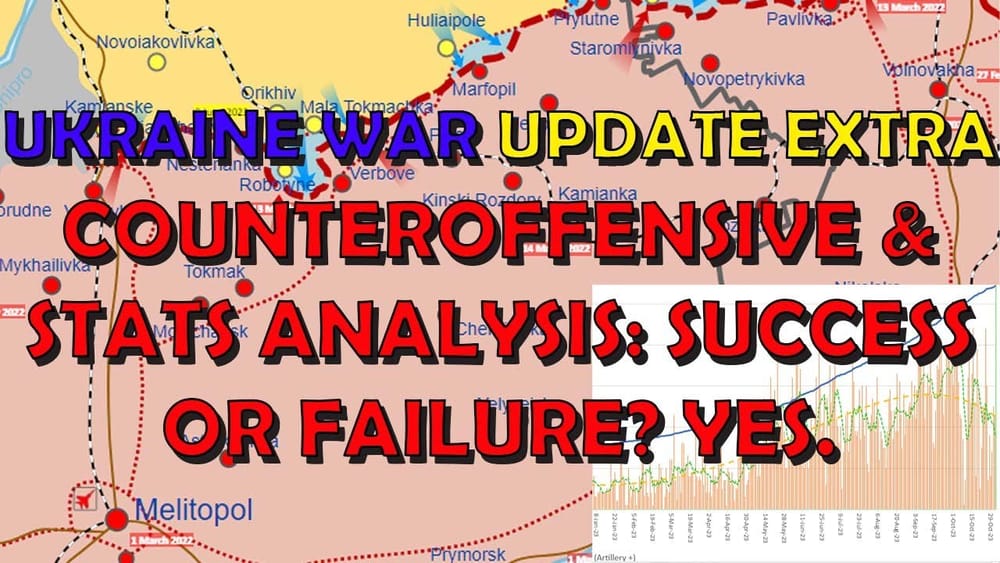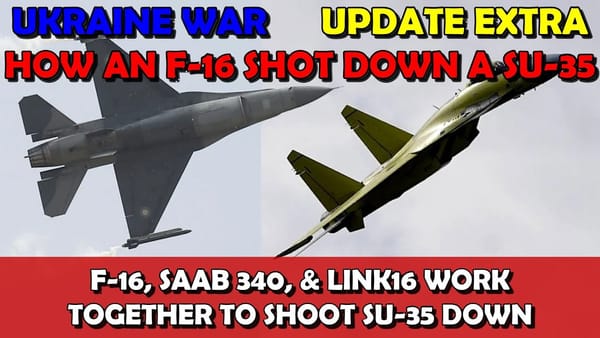Ukraine War Upd. EXTRA: Counteroffensive Analysis - Success or Failure? Yes.
Table of Contents 📖
| Topic ID | Topic Title | Timestamp |
|---|
"An honest appraisal of Ukraine's counteroffensive is important because if you don't identify errors and enduring weaknesses, you can't address and rectify them for the future."
Hello Team!
Jonathan introduces the topic of analysing the success or failure of Ukraine's counteroffensive, acknowledging his own uncertainty about what he will conclude. He notes the importance of being aware of our psychological biases as pro-Ukraine individuals when interpreting data and views that may not align with the most positive outlook.
Return to top⤴️
Counteroffensive Analysis
Jonathan reviews threads by Shashank Joshi (The Economist) and Neil Hauer which argue that Ukraine's counteroffensive has been a "serious failure" as it has not met its stated goals of liberating significant territory including Tokmak and Melitopol. Key points:
- Ukraine had compiled significant artillery ammunition for the offensive which has now been depleted and will be difficult to replace soon
- Attrition of Russian troops and equipment, while high, has not been sufficient to induce a collapse or political shift
- Ukrainian generals have recognised the need to identify and address the weaknesses and failures of the counteroffensive
Jonathan notes the pushback to these claims but suggests that if Tokmak was the explicitly stated "minimum goal" by Ukraine, then failing to reach it could be deemed a failure. However, he acknowledges the difficulty Ukraine faced in balancing the timing of the offensive with waiting for sufficient Western-supplied equipment and training.
Return to top⤴️
Data Review
Using data visualisations from Dell, Jonathan analyses trends in Russian losses of personnel and equipment (tanks, APVs, artillery, MLRS, anti-aircraft, aircraft, vehicles) during the counteroffensive period. Key observations:
- Russian personnel losses peaked earlier in 2023 (during Bakhmut offensive) and have declined slightly during the counteroffensive
- Tank losses have increased during the counteroffensive
- Artillery losses have spiked significantly and consistently since April/May
- MLRS and anti-aircraft system losses show slight upward trend
- Aircraft and helicopter losses spiked at start of counteroffensive as Russia used them defensively
Jonathan suggests this data indicates Ukraine shifted from a territory-focused to an attrition-focused strategy, degrading key Russian equipment and logistics. However, this attrition has come at a cost to Ukraine's own personnel and offensive equipment, raising questions about their capacity to continue the offensive without reconstituting their forces.
Return to top⤴️
Conclusion
In conclusion, Jonathan argues that:
- The initial Ukrainian goal of liberating significant territory has not been achieved, so could be deemed a "failure"
- However, Ukraine succeeded in its revised goal of attriting key Russian equipment and personnel
- The open question is whether Ukraine can continue the offensive to reach Tokmak without significant reconstitution of its forces
- The timeline for achieving the ultimate objective is now open-ended
- In other ways (e.g. pushing back the Russian Black Sea fleet, cruise missile strikes, ATACMS usage) this period has been successful for Ukraine
So the question of whether the counteroffensive has been a success or failure is complicated and depends on how the goals and timeline are defined. At this stage, Ukraine has not yet succeeded in its original aims, but still might if given sufficient time and resources.
Return to top⤴️
Wrap up
Jonathan concludes by inviting viewers to share their own thoughts on the subject, hoping his analysis has been useful even if it has clouded the conclusions further. He signs off with his customary "take care, speak soon, toodle pips".
Return to top⤴️



